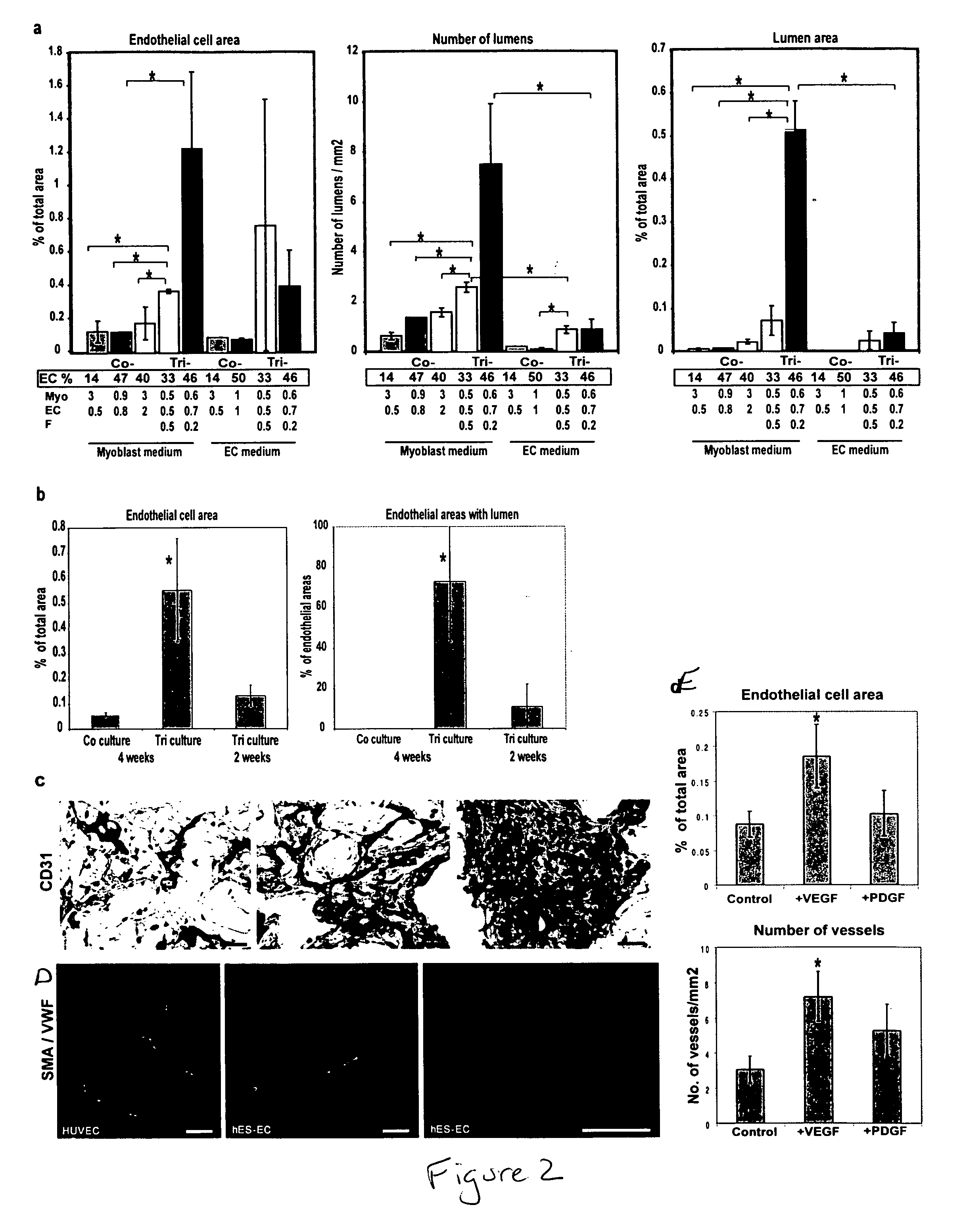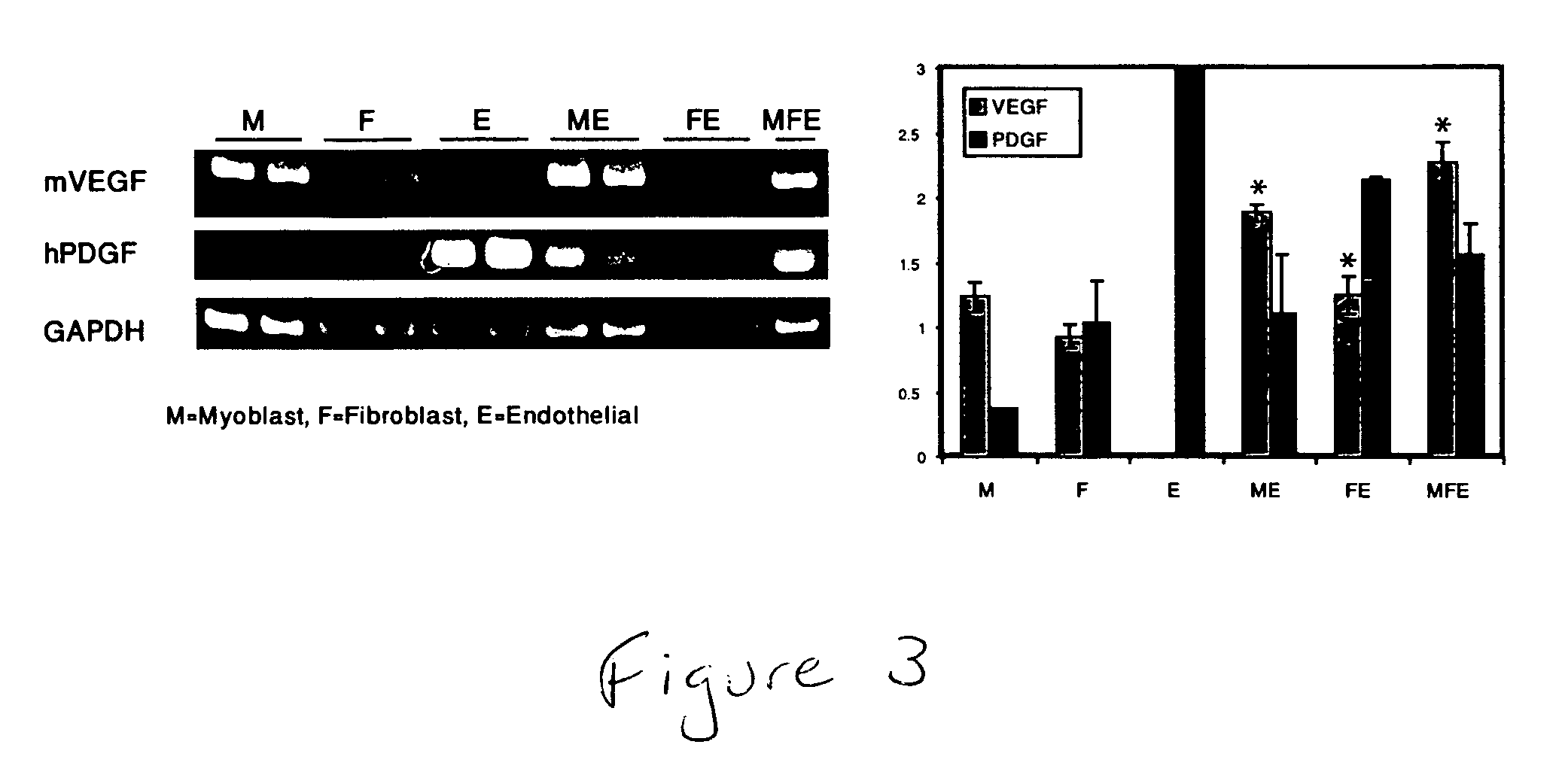Engineering vascularized muscle tissue
a technology of vascularized muscle tissue and engineered constructs, which is applied in the direction of artificial cell constructs, skeletal/connective tissue cells, biocide, etc., can solve the problems of complex tissue engineering, inability to vascularize the tissue in vitro, and inability to achieve thick, highly vascularized tissues
- Summary
- Abstract
- Description
- Claims
- Application Information
AI Technical Summary
Benefits of technology
Problems solved by technology
Method used
Image
Examples
examples
Cell Culture
[0052] Mouse myoblast cells (C2C12) (Yaffe, et al., Nature (1977) 270, 725-727; Blau, et al., Science (1985) 230, 758-766, the contents of both of which are incorporated herein by reference) were cultured in DMEM supplemented with 10% fetal bovine serum (FBS), 10% calf serum, and 2.5% HEPES buffer (myoblast medium). Human umbilical vein endothelial cells (HUVEC) were cultured in endothelial cell medium (EGM-2; Cambrex Biosciences). Mouse embryonic fibroblasts (MEF) (Cell Essentials, Boston) were cultured in DMEM supplemented with 10% FBS (embryonic fibroblast medium). HESC-derived CD31+endothelial cells were isolated as described (Levenberg, et al., 2002) and cultured in endothelial cell medium.
Polymer Scaffolds
[0053] Porous sponges composed of 50% poly-(L-lactic acid) (PLLA) and 50% polylactic-glycolic acid (PLGA) were fabricated as described (Levenberg, et al., 2003) with pore sizes of 225-500 μm and 93% porosity. The PLGA was selected to degrade quickly (˜3 weeks...
PUM
 Login to View More
Login to View More Abstract
Description
Claims
Application Information
 Login to View More
Login to View More - R&D
- Intellectual Property
- Life Sciences
- Materials
- Tech Scout
- Unparalleled Data Quality
- Higher Quality Content
- 60% Fewer Hallucinations
Browse by: Latest US Patents, China's latest patents, Technical Efficacy Thesaurus, Application Domain, Technology Topic, Popular Technical Reports.
© 2025 PatSnap. All rights reserved.Legal|Privacy policy|Modern Slavery Act Transparency Statement|Sitemap|About US| Contact US: help@patsnap.com



